The Earth, a dangerous home

August 1983. Between 26 and 27 it did not stop raining, there was an intense rain, with about 500 l/m 2 of precipitation in Bilbao. Few will forget these terrible images: many rivers flooded the streets and squares and the water and mud reached the first life of the houses. When the water came down, the situation stands out: the cars were very small and concentrated on the edges of the streets; logs, boats and all kinds of frets, including bodies.
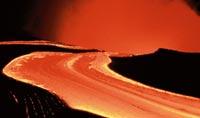
More than thirty people died in those floods. Economic losses 200 billion pesetas (1.2 billion euros). The catastrophe especially struck Bilbao, but many other peoples remained in a lamentable situation: Llodio, Bermeo, Bakio, Galdakao, Bergara...

Twenty-two years later, there are hardly any remains of this flood, the youngest will not even remember, but the danger continues to exist. With the dramatic setting nothing is fixed, but we must accept: In Euskal Herria we have a lot of flooding. And no wonder, the villages are on the banks of the rivers, and occasionally it rains over excess, the river overflows from the riverbed and occupies nearby, often urbanized lands.
This is the case of disasters in which a natural event damages the human being. At best, there will only be economic damage and in the worst case, thousands of deaths.
Rich people, poor people
Rich countries are clearly more economically harmed than the poor by disasters. No wonder, since the harmful heritage is more abundant: buildings, roads, bridges... But in much greater proportion is the damage suffered by poor countries and remain in a more serious situation. In fact, damage accounts for an average of 13% of gross domestic product, compared to 2% of the rich.

According to experts, if a country suffers damage greater than 10% of gross domestic product, it will hardly advance by itself. For example, Managua has not yet left the hole, it seems that the damage caused by the 1972 earthquake was too serious. On the other side you can put Bilbao, which is revitalized, overcoming the 1983 flood.
Most disasters occur in impoverished countries, which are largely the poor, and are the most dying. The disaster blacklist is spearheaded by a flood in China in 1887, in which it is estimated that the flood directly killed 900,000 people and six million indirectly. In this list they have also passed through rich countries, such as the United States and Japan, but it is a minority.
Less natural disasters
By definition, disaster is a natural fact that has harmed human beings. And this fact, whether an earthquake or heavy rain, cannot be avoided, but in general measures can be taken to minimize damage. For this it is necessary to apply current knowledge and technology. But simple measures are also effective, such as education.

Ramón Ortiz of the CSIC said that education would reduce by 25% the number of injured and killed in earthquakes and, in general, reduce to half the victims of disasters. It is very important that all citizens know what to do in the face of a situation of risk that could cause a catastrophe.
And it is that nature must be respected, because when angry he realizes how small and useless human beings are. The most serious disasters are caused by the loss of respect for nature in case of disaster risk, as happens in 1980 with the volcano St. Helens.
The St. Helens peak in the state of Washington began to stray, the biggest threat of disaster, and within a few days the magma began to spill, but rather distended. Of course, the houses and villages of the area were evicted, but no one was afraid, but the show attracted people.
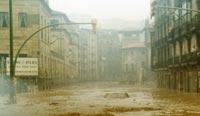
After a month without anything serious, they thought there would be no explosion. By then a hillside was expanding, a sign of a lateral explosion, but it was not properly interpreted by the experts, who worked in the volcanoes of Hawaii, where there is no lateral explosion.
Well, the north of the volcano exploded with enormous force: it caused the greatest detachment ever seen, and the burning breeze that came out covered the entire area (up to 30 kilometers from the volcano). More than fifty dead, some of them in ‘safe’ zone.
Dangerous Planet
There are different types of measures to minimize disaster damage. Education has already been mentioned, but proper land management is also necessary. On our planet every day there are earthquakes, volcanic eruptions, rains, droughts… the simplest solution would be not to live in the lands where they occur. But that will no longer be possible.
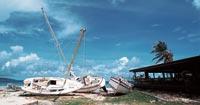
Tokyo, for example, is in a very dangerous place in terms of earthquakes, where three tectonic plates converge. Since 1920 there have been no major earthquakes in the Japanese capital, but it will occur sooner or later, and about thirty million people live in Tokyo. Thirty million people accumulated in one of the most dangerous places on the planet. This has a difficult solution if it is not through technology and education, with buildings that will not fall into earthquakes, but that cannot be avoided.
In this sense, at least, construction should be avoided in the places of greatest risk of the territory in which we live. Risk maps are used to do this. In these maps appear areas with the highest risk of detachment or flooding, or the consequences that can have the activity of a volcano: what will happen if the heat caused by the rise of the internal magma melts the snow from the top, or what path will it do if the lava comes out, for example.
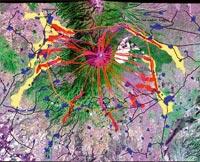
With risk maps, we find out where the disaster will occur—all right, the disaster will not be a mere natural fact. But there is another question to the head: when? That is, when will this disaster risk occur? Surely you cannot know. Those related to time (snowfall, torrential rains, tornados, storms...), well, but those related to activity within the Earth (earthquakes, volcanoes, tsunamis...), not far. A volcano can spend years running and sleeping without explosions.
Many times, therefore, one forgets that he is in danger, because he spends too much time from one catastrophe to another for the life of man today. At first the images of disaster are very cool in the mind, and fear past, but four years are enough to forget such an event. The disease will come sooner or later; if we do not forget it, it means bad.
The main disasters
The spring of this year the disasters were protagonists in two conferences. In the Natural Days of Tolosa, Ramón Ortiz explained how an event in nature becomes a disaster, while in the Bidebarrieta Library of Bilbao, Antonio Cendrero, revolved around a question: Are the dangers of nature catastrophic or is management catastrophic?
We had the opportunity to be with these two experts and among many other things they told us:
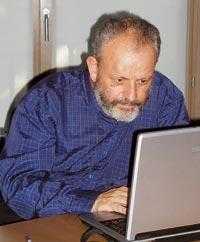
“It is very difficult to predict catastrophes. Take Teide. This I will say quietly, but in Tenerife we have a problem since 2001: Teide is awakening the volcano. You may go back to sleep, that is, stop your current activity. The tectonic activity you have awakened can be paralyzed. But we can also have a rash that can be quiet (effusive, basalic) or have an explosive rash.
Another option is to start with a basaltic eruption and then the explosion. That has already happened in Tenerife. A collapse can also occur, as the high of Teide is very high and very unstable. An earthquake can cause such an event.
All this is a predictive tree. We have several options and we have to know the probability of each of them happening and there is the question. As experts collect data, some options are reinforced and others are discarded. This is a simplified predictions tree, but in reality many more factors are taken into account.”
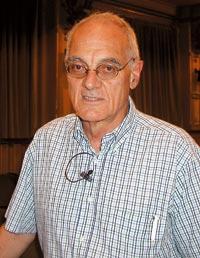
“There is a very interesting fact: if you look at what has happened in the world between 1950 and 2000, the population is 2.3 times greater, energy consumption has also multiplied by four, the gross domestic product is seven times greater (so we are more efficient: we produce more per person and energy unit), the amount of disasters has grown up to 9 times and the economic damage caused by disasters even more: They are 25 times larger.
This means that we are more friends and have more property that can be damaged, it is logical that the damage is greater. But they should be 7 times bigger and not 25. In other words, today we manage the economy much better, but much worse disasters.
And although in the last 50 years we have improved scientific knowledge and technical capacity, our functioning as a society is regrettable. That knowledge and capacity are not used or, rather, are getting worse.”





